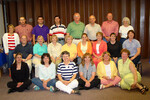Recent Articles
News
These competitive grants initiate or expand the efforts of farmers, gardeners, citizens, govern
News

Spotlight On...

https://www.nrcs.usda.gov/conservation-basics/conservation-by-state/kansas/news/kansas-nrcs-announces-application-deadline
USDA’s Natural Resources Conservation Service (NRCS) will dedicate financial and technical assistance to a new organic management standard and partner with new organic technical experts to increase staff capacity and expertise.
SALINA, KANSAS, May 17, 2023 ‒ The U.S. Department of Agriculture (USDA) announced deta
A Review Of...

"Gosh, I hope I didn't offend you." My friend says to me as he comes through my door. "How So?" I ask. "That post I made on Facebook about how all {people with your political views slur} are imbeciles – You know I didn't mean you, though, right... you’re pretty smart and I would never say that about you or want to hurt you" He stammers awkwardly. People are hard to hate up close when you get to know them. It’s almost imposs
News
Events

Got something to say?
Stuck with your writing and want to take it to the next level?
Tuesday Writing is an opportunity for new and experienced writers to take a fresh look at writing fact, fiction, poetry, and prose.
When?
Classes begin April 25th
-and then-
Weekly, Tuesdays, 10:45 - 11:45
Where?
St. Francis Library
Who?
All writers - All levels
How much?
$10 per class, cash or check
What else?
Drop-in / begin any time
Class instruc
Spotlight On...
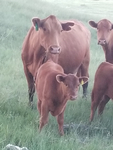
retired NRCS District Conservationist
Grazing management is matching available forage to the stocking rate of the animals to be grazing the native range resource. The goal of grazing management is to market a valuable resource at a profit while maintaining and improving the range resource. The stocking rate has a huge impact on animal performance and the available range of forage resources.
The stocking rate is defined as the land area allocated to each grazing animal for
Spotlight On...
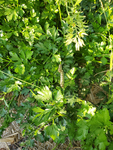
retired NRCS District Conservationist
To a Botanist, a herb is a leafy plant that doesn't grow a woody stem and usually dies back at the end of each growing season. Both grasses and forbs are herbs. To a chef, a herb is any of a vast number of aromatic or savory plants used to add flavor and character to foods. To a gardener, an herb is a delightful, easy-to-grow addition to the landscape, perennial border, or terrace urn. To anyone who uses plants medicinally, an herb is
Spotlight On...
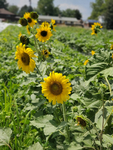
retired NRCS District Conservationist
Have you heard of the "Dust Bowl" of the 1930s? Because of extreme drought and farming methods, a huge dust cloud made it to Washington D.C. Franklin D. Roosevelt was newly elected President. The United States was recovering from the Great Depression. The drought in the great plains caused the Dust Bowl and was made worse by the tillage methods used then.
Hugh Hammond Bennett was on Presidents Roosevelt"s staff. He
News

This market is one of the monthly Farmers' Markets held through the off-season (Oct-May). These monthly Markets will be held every third Saturday.
Vendors are lined up for the market, and there is a plan for food to be served, for donation.
If you are a vendor and would like to participate, please let the coordinator know at: coordinator@cncofarmersmarket.com
Or if you are a customer,
These competitive grants initiate or expand the efforts of farmers, gardeners, citizens, govern


This market is one of the monthly Farmers' Markets held through the off-season (Oct-May). These monthly Markets will be held every third Saturday.
Vendors are lined up for the market, and there is a plan for food to be served, for donation.
If you are a vendor and would like to participate, please let the coordinator know at: coordinator@cncofarmersmarket.com
Or if you are a customer,

https://www.nrcs.usda.gov/conservation-basics/conservation-by-state/kansas/news/kansas-nrcs-announces-application-deadline
USDA’s Natural Resources Conservation Service (NRCS) will dedicate financial and technical assistance to a new organic management standard and partner with new organic technical experts to increase staff capacity and expertise.
SALINA, KANSAS, May 17, 2023 ‒ The U.S. Department of Agriculture (USDA) announced deta

retired NRCS District Conservationist
Grazing management is matching available forage to the stocking rate of the animals to be grazing the native range resource. The goal of grazing management is to market a valuable resource at a profit while maintaining and improving the range resource. The stocking rate has a huge impact on animal performance and the available range of forage resources.
The stocking rate is defined as the land area allocated to each grazing animal for

retired NRCS District Conservationist
To a Botanist, a herb is a leafy plant that doesn't grow a woody stem and usually dies back at the end of each growing season. Both grasses and forbs are herbs. To a chef, a herb is any of a vast number of aromatic or savory plants used to add flavor and character to foods. To a gardener, an herb is a delightful, easy-to-grow addition to the landscape, perennial border, or terrace urn. To anyone who uses plants medicinally, an herb is

retired NRCS District Conservationist
Have you heard of the "Dust Bowl" of the 1930s? Because of extreme drought and farming methods, a huge dust cloud made it to Washington D.C. Franklin D. Roosevelt was newly elected President. The United States was recovering from the Great Depression. The drought in the great plains caused the Dust Bowl and was made worse by the tillage methods used then.
Hugh Hammond Bennett was on Presidents Roosevelt"s staff. He

Got something to say?
Stuck with your writing and want to take it to the next level?
Tuesday Writing is an opportunity for new and experienced writers to take a fresh look at writing fact, fiction, poetry, and prose.
When?
Classes begin April 25th
-and then-
Weekly, Tuesdays, 10:45 - 11:45
Where?
St. Francis Library
Who?
All writers - All levels
How much?
$10 per class, cash or check
What else?
Drop-in / begin any time
Class instruc
The purpose of this meeting is to make recommendations to the Natural Resources Conservation Service (NRCS) State Conservationist related to addressing natural resource concerns at a local l

This market is one of the monthly Farmers' Markets held through the off-season (Oct-May). These monthly Markets will be held every third Saturday.
Vendors are lined up for the market, and there is a plan for food to be served, for donation.
If you are a vendor and would like to participate, please let the coordinator know at: coordinator@cncofarmersmarket.com

January 3, 2023
Media please contact:
Heather Lansdowne
785-564-6706
AgMedia@ks.gov
MANHATTAN, Kansas — The Kansas Department of Agriculture and K-State Research and Extension (KSRE) will offer virtual workshops February 6-10, 2023, to assist farmers' market vendors and managers, and also for those wanting to sell food products directly to consumers. The workshop series includes five online Lunch and Learn sessions.
"Over the past two years, we've se
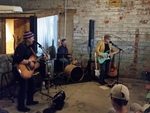

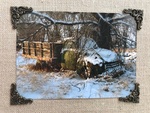
Allison Grice's exhibit of photography and graphic design has opened at Quincy Gallery with a reception on March 2nd.
Ms Grice, a St Francis native, is well known here as an exceptionally talented artist with wide range of interests. Over the years, though, it is photography that has allowed her to share her heart.
Whether it's a rusty old pickup or wheat blowing in the breeze against a sunset, Ms Grice's photography shows her love of nature and history. Sh

So, if you would like to help us put with a play, either on stage or behind the scenes, please come by Fresh 7 this Saturday and let me know.

"Gosh, I hope I didn't offend you." My friend says to me as he comes through my door. "How So?" I ask. "That post I made on Facebook about how all {people with your political views slur} are imbeciles – You know I didn't mean you, though, right... you’re pretty smart and I would never say that about you or want to hurt you" He stammers awkwardly. People are hard to hate up close when you get to know them. It’s almost imposs



Eagle, working alongside with the St. Francis Internet Committee volunteers, reached 210 early signups, meaning the upgrade will proceed as planned.
"The support of the community of St. Francis has been simply amazing,' said Travis Kohlrus, Ea

After seeing the 4-28-17 video of the object moving across the moon, @ http://www.latest-ufo-sightings.net/2017/04/ufo-caught-moving-across-moon-baffles-viewers.html it reminded me of a similar video I had shot on 10-22-14 north of St. Francis, KS at sunset. If it wasn’t for that post I wouldn’t have posted this—however both videos to me look as if they are related somehow???
It was worth a post
Camera Zoom was 20X & the video is 500% of normal speed
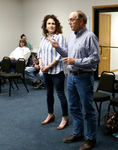
A Fiber Internet infrastructure in St Francis will greatly increase your internet speed. And by 'greatly' I mean 8 to 10

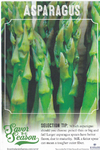

Turmeric has been used in both Ayurvedic and Chinese medicine as an Anti-inflammatory, to treat Digestive and Liver problems, Skin diseases, and Wounds.
Curcumin is also a powerful Antioxidant. Antioxidants scavenge molecules in the body known as free radicals, which damage cell membranes, tamper with

If this is your recipe, let me know and I will credit you on this page.
Golden Milk
Step 1: Turmeric Paste
Ingredients:
1/4 cup of turmeric power
1/2 teaspoon of ground pepper
1/2 cup of filtered water
Directions:
Mix all ingredients in a small sauce pan and mix well. Turn the heat to medium high and stir constantly until the mixture is a thick paste. This does not take long, so don
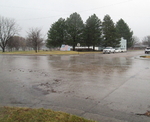

You must just see for yourself the destruction and the mayhem in the video.
I will not use this video as a platform to talk about how bad


The migrating swarm landed and worked it's way down Main street this morning, and the townsfolk protec

Here is a link to the information page on the Kansas Legislature site:
http://www.kslegislature.org/li/b2017_18/measures/hb2389/
March 23, 2017
The Honorable John Barker, Chairper
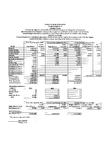
Budget Summary
Proposed budget 2017 Expenditures and Amount of 2016 Ad Valorem Tax establish the maximum limits of the 2017 budget. Estimated tax rate

Please respond with the area/city you live in and answer the following without regard to money or practicality:
What are the top 3 things your town needs?
1.
2.
3.
Where do you live?
Thank you for your responses.
Please s
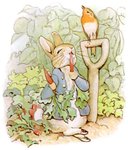
NEWSLETTER FOR 06/15/2020
THE TIME IS OUT OF JOINT – A FATHER’S DAY MESSAGE [3]
<blockquote>Now my dears, said old Mrs. Rabbit one morning, you may go into the fields or down the lane, but don't go into Mr. McGregor's garden: your Father had an accident there; he was put in a pie by Mrs. McGregor.
_The Tale of Peter Rabbit by Beatrix Potter</blockquote>
Nature is out of balance, teetering toward an unsavory resolution that may, in fact, be revenge for

Up till now, if a kid wanted to wait until a year or two after high school to find his or her true calling he/she could. If it turns out he was to be starving poet then our world will have found another midwife of truth. If she was to be a c
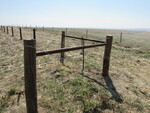
Photos By Cale Rieger, NRCS Natural Resource Specialist
Proper fence is needed for grazing livestock in a rotational grazing system. As mentioned before, a rest-rotation grazing system is essential for properly managing grazing systems in the western Kansas area of short grass and mid-grass prairie.
Many perimeter fences are 3 or 4 strands of barbed wire. Interior cross-fences are usually a single smooth wire. The interior fe

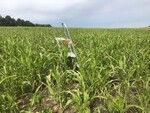
What are cover crops? Cover crops are grown for the protection and enrichment of the soil. In Agriculture, cover crops are used to cover and protect the soil rather than to be harvested.
Cover crops are used to manage cropland and reduce soil erosion, improve soil fertility, improve soil quality, improve water storage, reduce pressure from weeds, pests and diseases, and improve biodiversity and wildlife in an agroecosystem.
